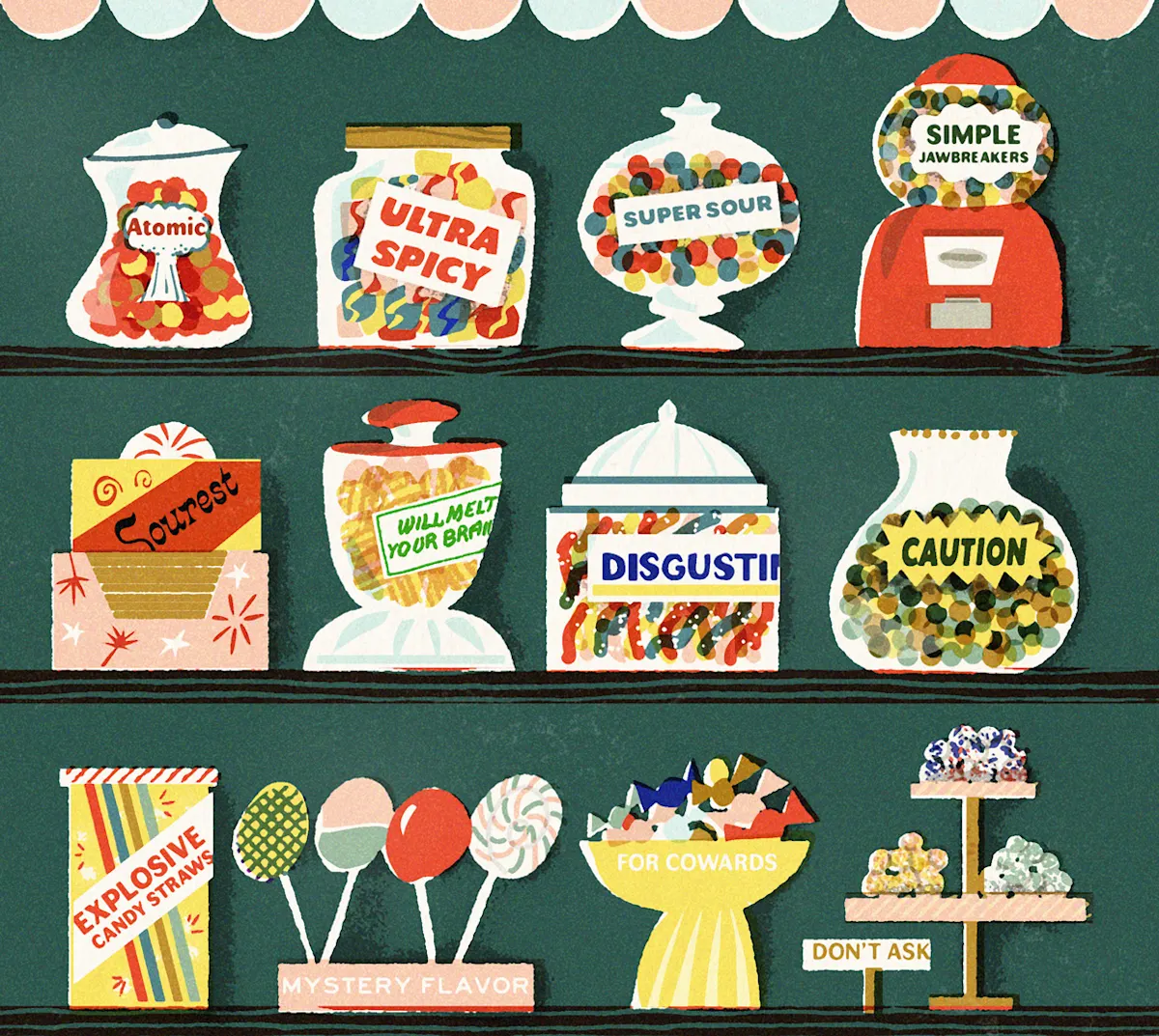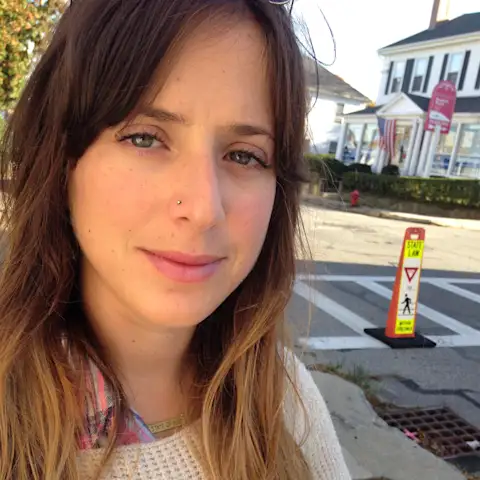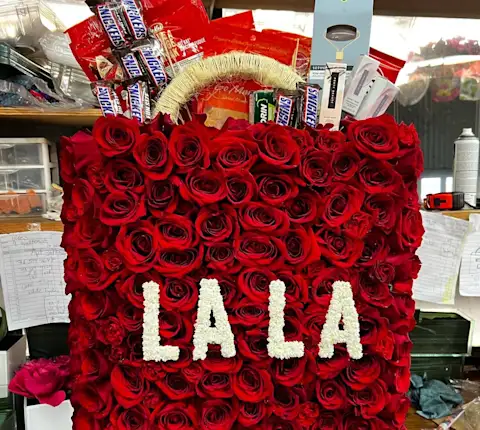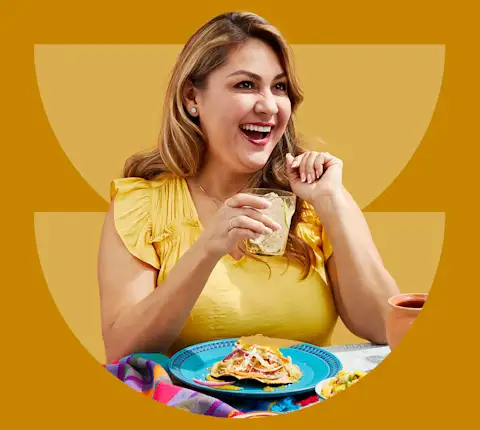“It’s like a roll-on deodorant tube,” says Skye Greenfield Cohen, one of the third-generation owners and operators of New York’s Economy Candy, which opened in 1937. “But instead of deodorant, it's sticky sour candy inside, and you just lick the top.” The candy Greenfield Cohen is describing is one of the newest in a category of sour treats that has become popular among young kids. (Also popular, she notes: spicy candy.)
Is a tack toward sour an emerging trend in candy? Well, not really. Over time, trends surrounding candy have both changed and stayed the same. Back in the 1990s, Gen X-ers sucked on Warheads, chewed Crybabies, and mainlined Sour Patch Kids, which came to the market in 1985. Although ultra sour candy may not have existed back, say, “in the good old days,” as food historian Susan Benjamin, food historian and president of True Treats, a historic candy store based in West Virginia, likes to put it, it wasn’t for a lack of desire. “They would have had really sour candy, if they knew how to do it,” she says. “They didn’t.”
The Origins of Candy
Candy, as we know it today, began as medicine, with sugar as the sole active ingredient. It was also used to sweeten bad-tasting medicines. In the mid-1800s, Benjamin says, candy became a treat in its own right, particularly for kids from working-class families.
When the Second Industrial Revolution, and thus modern marketing, erupted after the Civil War, new candies began to explode onto the scene. “It used to be rarefied. It was really there for celebrations,” she says of the pre-Civil War time period. Suddenly, candy was more available, and reserved less for celebratory events. Candy had become mainstream.
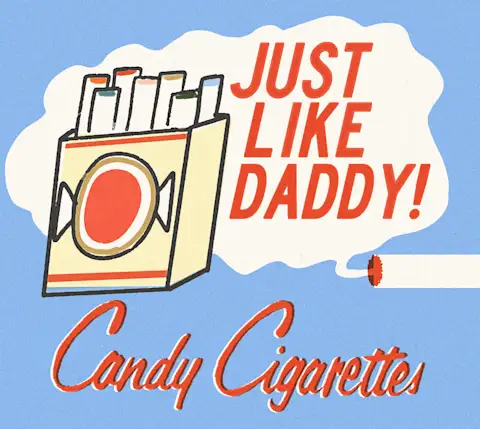
Marketing, industry, and innovation in the post-Civil War era also meant that companies were always trying to compete with one another, and this changed the trajectory of how candy was packaged and presented to buyers. Brightly colored and novelty-shaped candies became popular. “Candy was a product of marketing,” Benjamin says. “What they would do, for example, is have candy in little glass guns, and you would screw the top off and take the candy out. Or they would have candy cigarettes. They used a lot of artificial colors.”
Contemporary vessels are not exactly the same; candy no longer comes in a firearm. But today’s deodorant tube is yesterday’s glass gun, a confection meant to entertain the eyes as much as the tongue.
And so it follows that candy-consumers of the early days — and the candy consumers of 30 years ago — were not entirely different from the candy consumers of today. Drawn in by marketing, it has always been about exciting, eye-popping flavor and color.
Candy Today
When it comes to emerging trends, experts say that what’s old is new again. “There definitely is that push for nostalgia, for candies that were popular in the 50s, the 60s, even the 70s that had kind of fallen out of favor and now are coming back around,” Greenfield Cohen says. That includes candies like Necco wafers, made by the New England Confectionery Company; Mary Janes; and Sky Bars. This desire to experience a piece of the past, says Jason Liebig, a branded food historian and television host based in New York, has much to do with the role that social media plays in connecting people to their food.
Candy companies, Liebig says, “have become part of our larger entertainment, and that’s driven by fun innovation, but really it’s all driven by social media,” Liebig says. “When there’s a new flavor of something — when they stuff something new into a Reese’s — everyone who’s online wants to try it.”
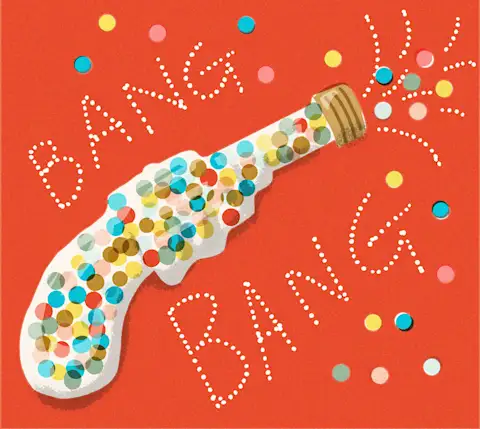
These brands have used social media to tap into nostalgia, too, by posting images of old candies that consumers ate as children. Liebig himself has helped perpetuate this with his own curated images. This spark of nostalgia has made candy consumers want to seek out their favorite candies, to try to recapture long-lost flavors, smells, and sensations.
Another candy category that has expanded and innovated noticeably within the past few decades, Liebig says, is the chocolate category. “There’s a huge movement in bean-to-bar, locally sourced, and knowing where these things are from.” The craft chocolate movement, he says, was a complementary movement, and not a disruptive one.
Now, Liebig says, chocolatiers are able to take risks in their craft, and it has opened up a broader category for both artisans and consumers. “Initially they started out doing the things that they do, but then they started putting in orange peels and pieces of bacon and sea salt and a lot of flavors that you wouldn’t normally see. It wasn’t just insane levels of dark chocolate,” Liebig says.
Snickers and Reese’s and Hershey’s, he notes, sell better than they ever have, and remain dominant in the United States. “The new industry of smaller manufacturers has been good — not only for them, but for Hershey's and Mars as well,” Liebig says. “And the innovation in that part of the category has fed back into innovation with the mainstays.”
So… What’s Different?
Have candy trends changed all that much over the course of time? Experts say: not so much. Kids and adults are still searching for the same things — for treats that comfort and delight them, and for something that can create a common bond.
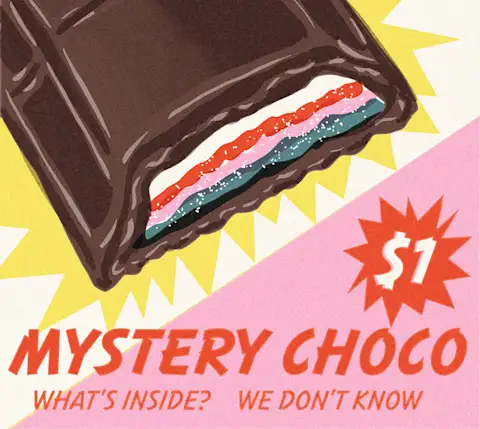
Take the marshmallow-flavored nougat bar cloaked in chocolate known as the Charleston Chew, for example. Though it was created in 1925, “[kids] love it,” she says, “because it makes them happy, because it made their grandparents happy, and their grandparents gave it to them as a gift of love.” That sweets are passed down from one person to another in this exchange of love is one thing about candy that has stood the test of time.
Shop CandyPHOTO CREDIT: Illustrations by Lucia Calfapietra


